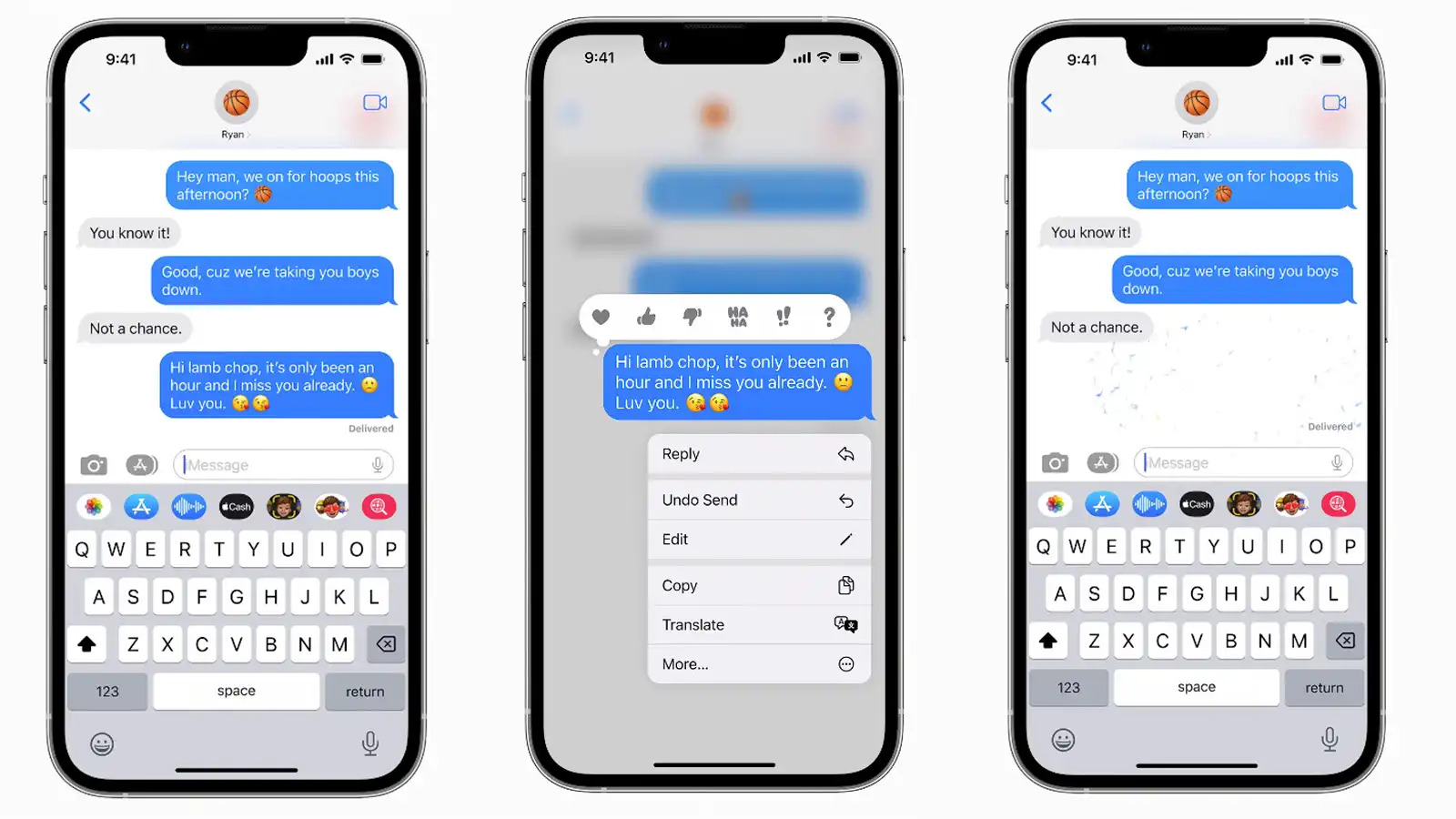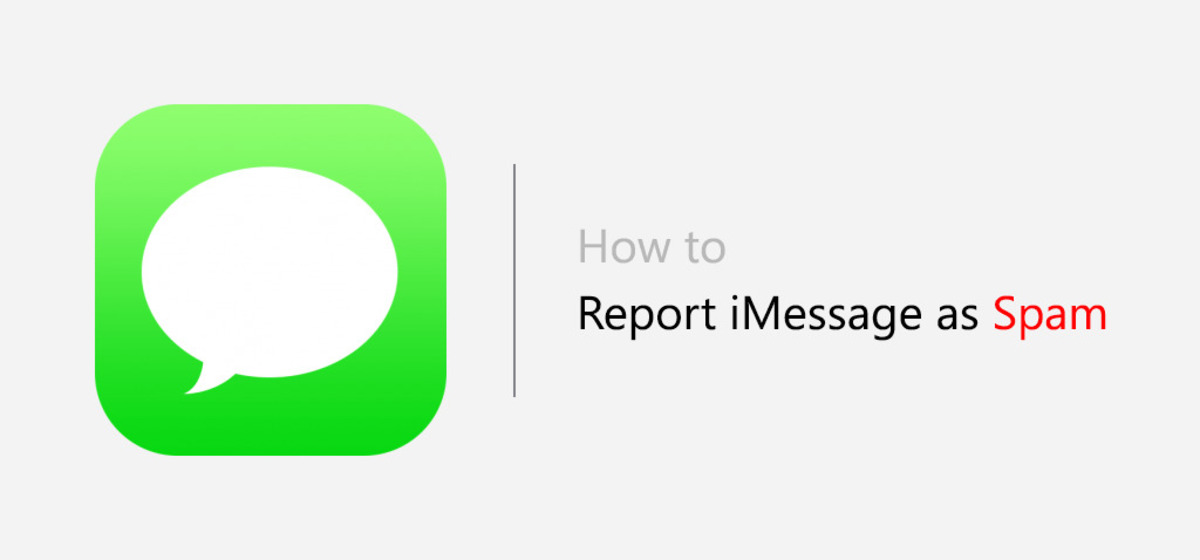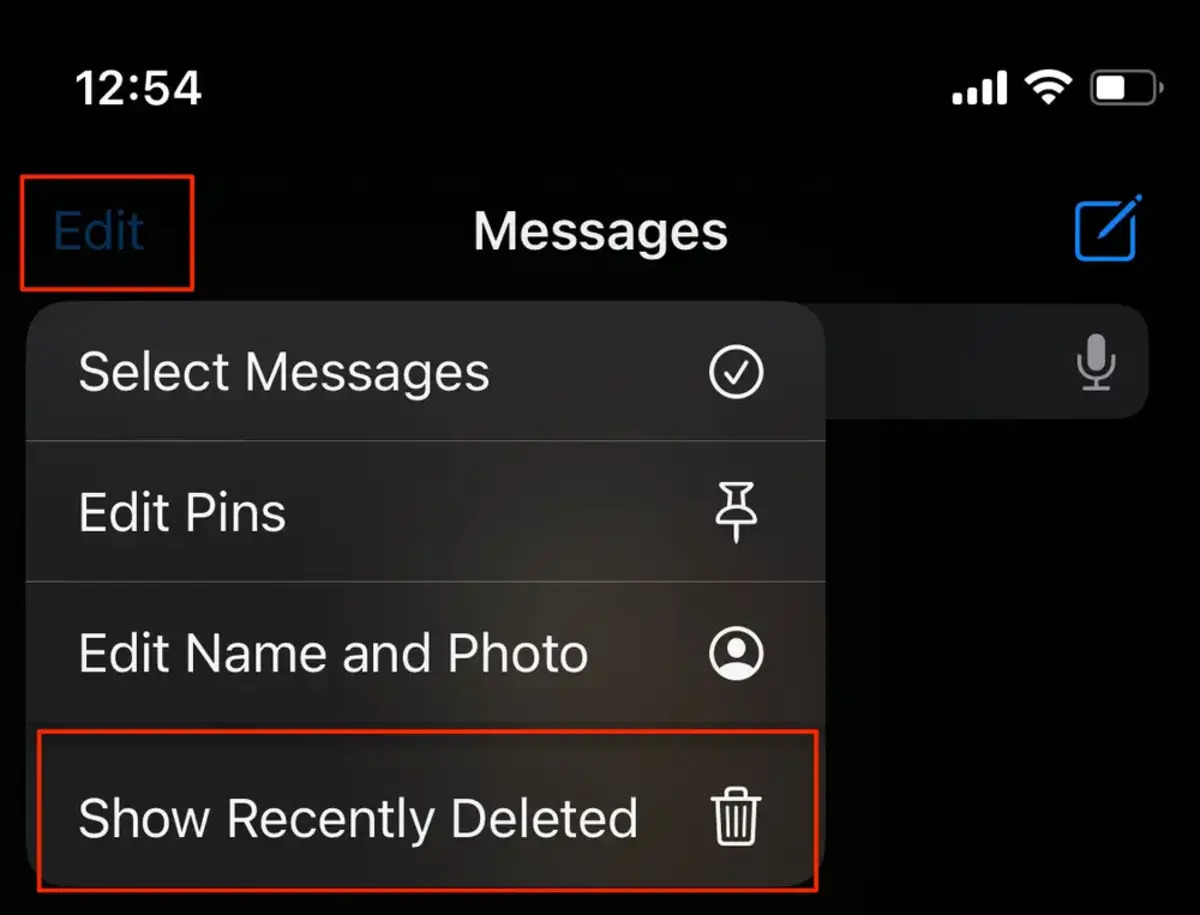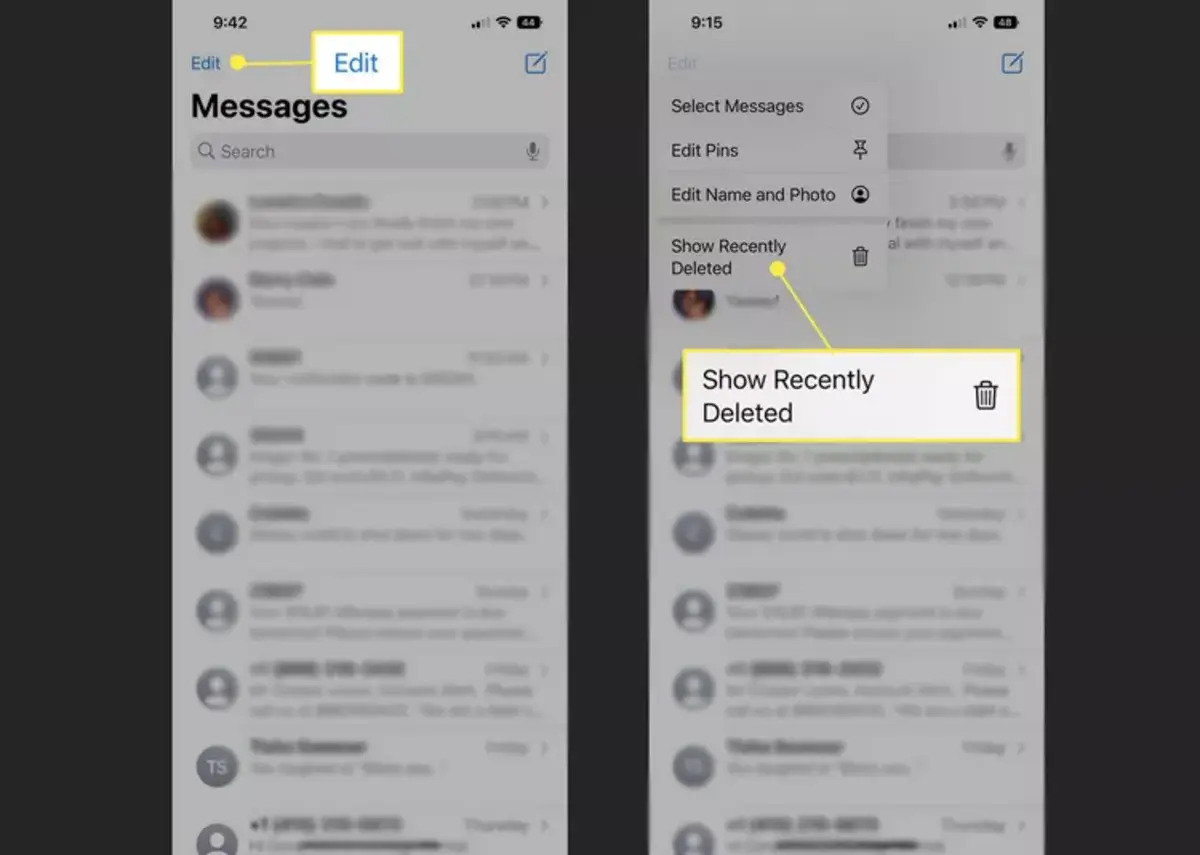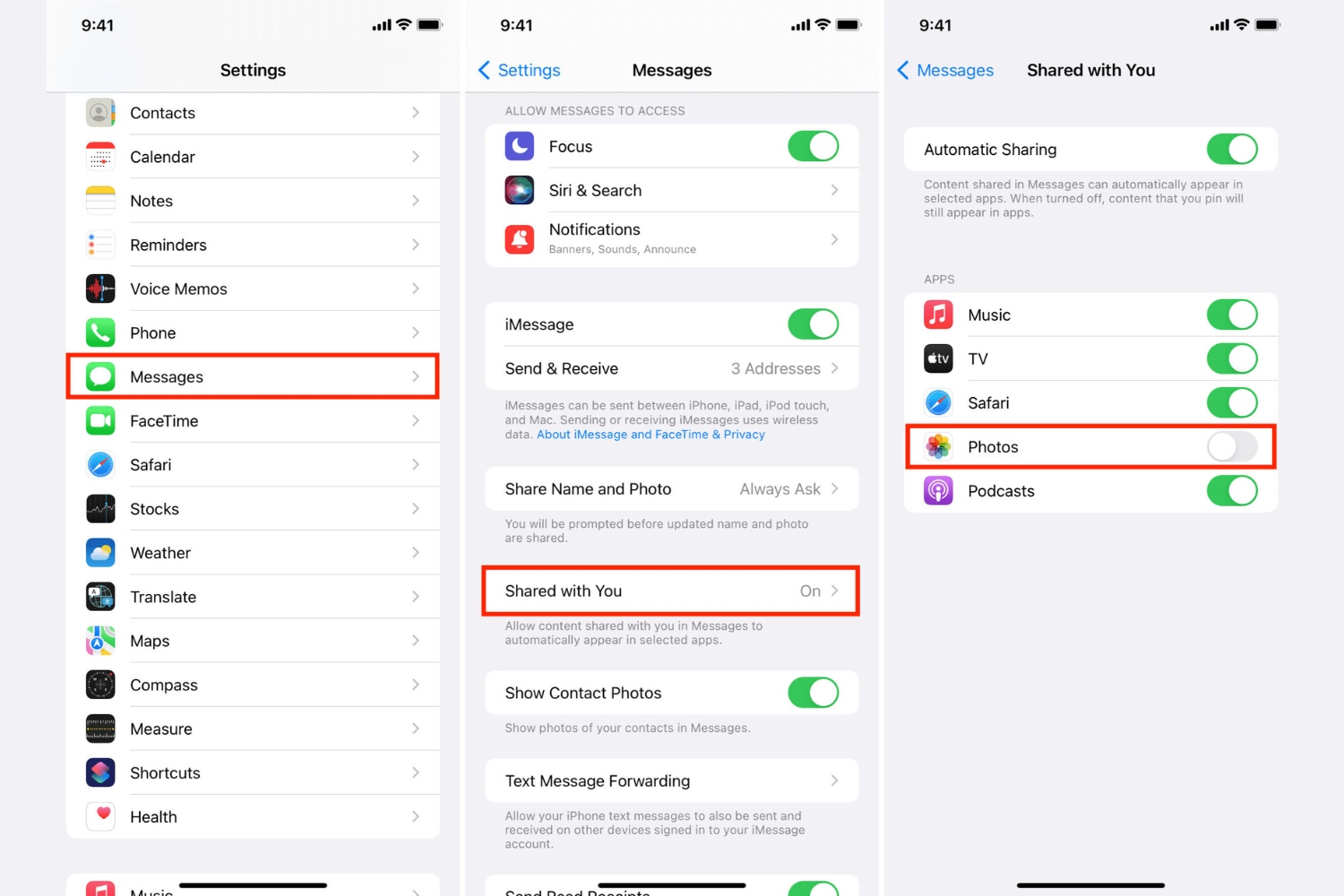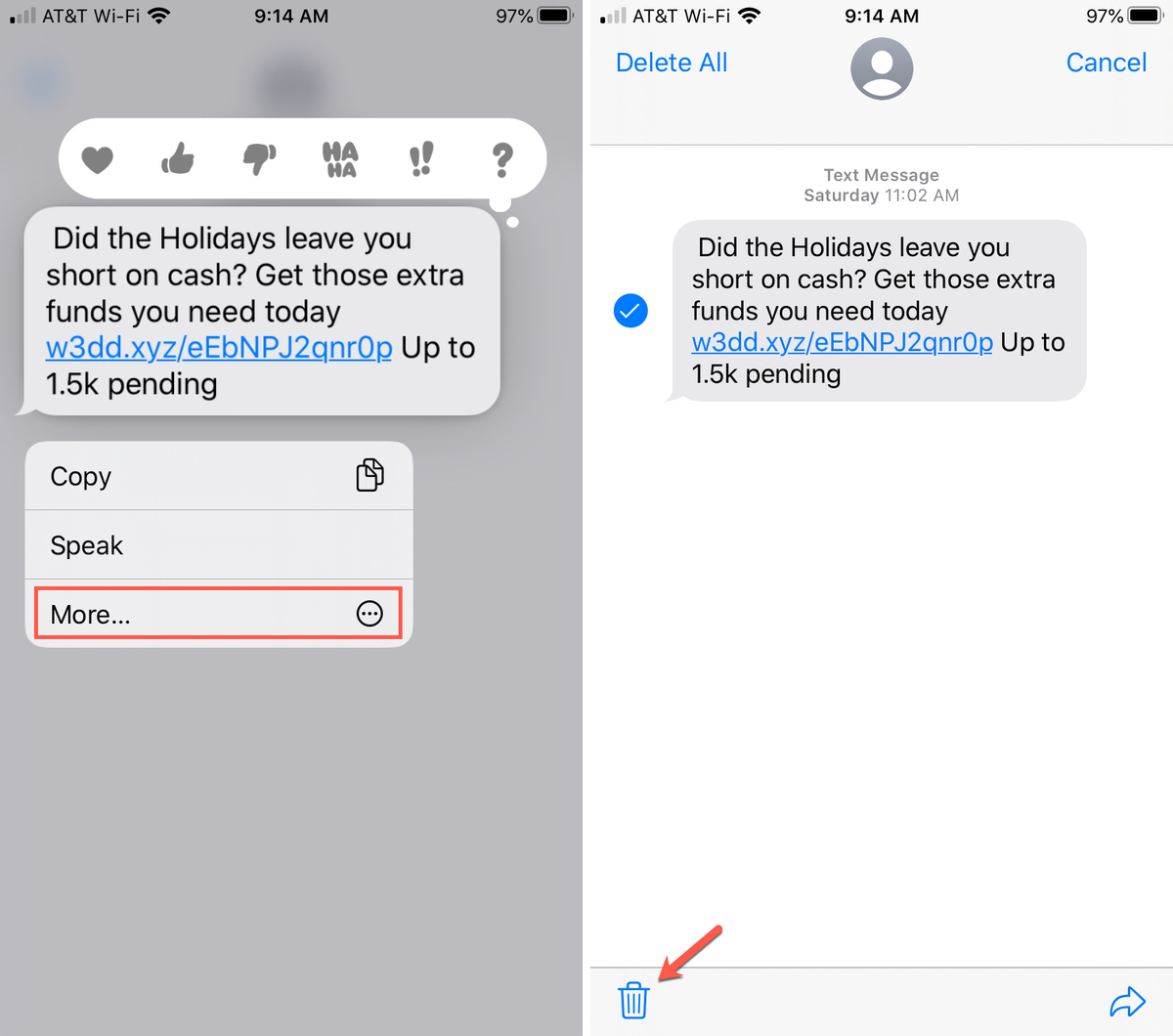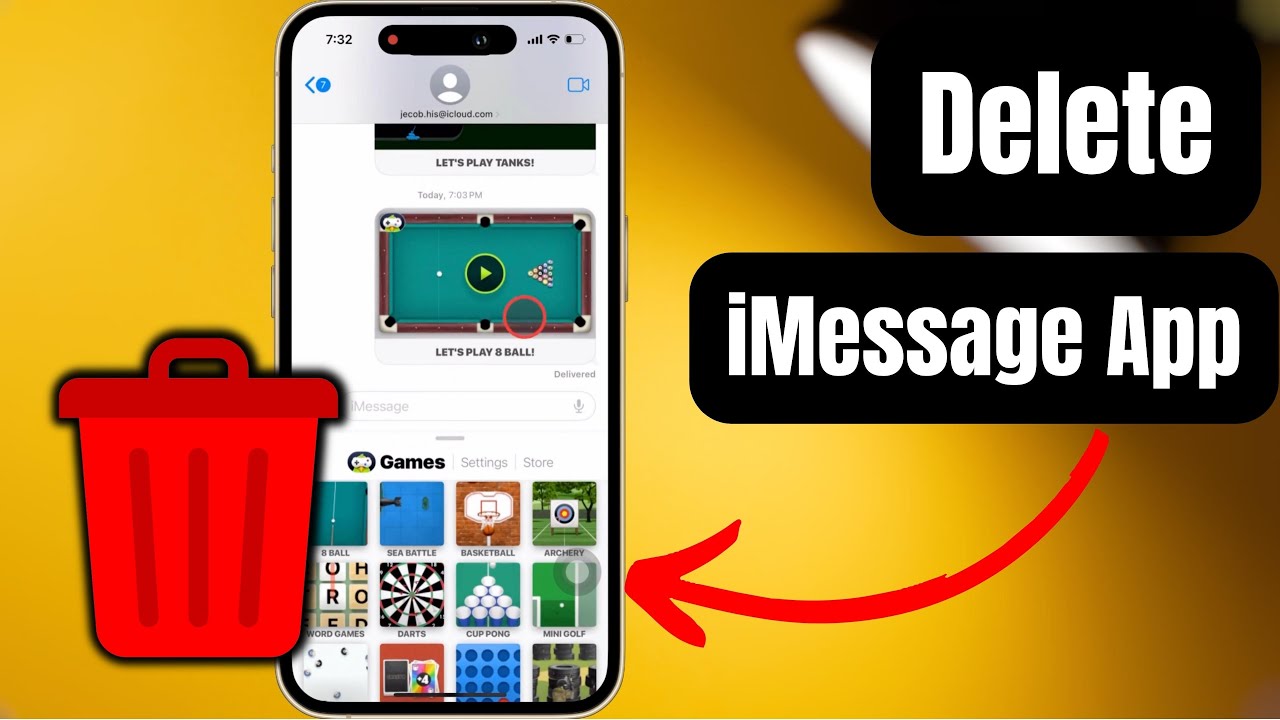Overview of iMessage and Message Deletion
iMessage is a popular messaging platform developed by Apple, which allows iPhone, iPad, and Mac users to send text messages, photos, videos, and more to other iMessage users. It offers a seamless and convenient way to communicate with friends, family, and colleagues, with the added benefit of end-to-end encryption for enhanced security.
One of the features that users frequently make use of is the ability to delete messages. Whether it’s to free up storage space, remove sensitive information, or simply declutter your message history, deleting messages can be a handy tool. However, it’s important to understand the implications and limitations of message deletion on iMessage.
When it comes to iMessage, it’s essential to distinguish between message deletion and conversation deletion. Deleting a message refers to removing a specific message from a conversation, while conversation deletion involves removing the entire conversation from your device. This distinction is important, as the actions and consequences differ between the two.
When you delete a message on iMessage, the message is removed from your device and will no longer be visible in the conversation. This means that you no longer have access to the content of the deleted message, and it will not appear in your message history. However, it’s worth noting that the recipient may still have the message on their device, and it will remain visible to them unless they also delete it.
Deleting a message on iMessage does not completely erase it from existence. While it may no longer be accessible to you, it may still be stored on Apple’s servers for a limited time. This is done as part of Apple’s approach to message synchronization and ensures that your messages are delivered across your devices efficiently.
It’s important to remember that deleting a message on iMessage does not guarantee complete privacy or security. In certain circumstances, such as legal investigations, law enforcement agencies may be able to access and retrieve deleted iMessages. Therefore, it’s crucial to exercise caution when exchanging sensitive or confidential information using iMessage.
Understanding the Difference: Message Deletion vs. Conversation Deletion
When it comes to managing your conversations on iMessage, it’s important to understand the difference between message deletion and conversation deletion. Although these terms are often used interchangeably, they have distinct implications and consequences.
Message deletion refers to the act of removing a specific message from a conversation. It allows you to selectively delete a message while retaining the rest of the conversation history. This can be useful if you want to remove a particular message due to its content, such as a typo, an embarrassing photo, or sensitive information that you no longer want in the conversation.
On the other hand, conversation deletion involves removing the entire conversation from your device. This means that all the messages, including attachments, photos, and videos, will be permanently deleted. It’s like starting fresh with that contact or group, as if the conversation never existed.
The decision to delete a message or a conversation depends on your specific needs and preferences. For instance, if you’re decluttering your message history and want to remove a few selected messages, message deletion is the way to go. It allows you to keep the rest of the conversation intact while removing the unwanted content.
On the other hand, if you want to completely remove all traces of a conversation, be it for privacy reasons or to free up storage space, you may opt for conversation deletion. However, it’s essential to note that conversation deletion is irreversible, and once you delete a conversation, you won’t be able to retrieve it.
It’s also worth mentioning that the implications of deleting a message or conversation may differ depending on the devices involved. For instance, if you delete a message on your iPhone, it may still be visible on your iPad or Mac, and vice versa. This is because iMessage is designed to sync messages across your devices, ensuring a seamless user experience.
When deciding whether to delete a message or conversation, consider your specific needs, such as privacy concerns, storage space limitations, or organizational preferences. It’s always a good practice to review your conversations periodically and remove any content that is no longer needed or relevant. This can help you maintain a clean and organized message history while ensuring your privacy and security on iMessage.
When You Delete a Message on iMessage: What Happens?
Deleting a message on iMessage can be a useful action, whether you want to remove a message containing a mistake, sensitive information, or simply declutter your message history. However, it’s important to understand what happens when you delete a message on iMessage.
When you delete a message on iMessage, the message is removed from your device and will no longer be visible in the conversation. This means that you no longer have access to the content of the deleted message, and it will not appear in your message history. It helps you maintain a clean and organized conversation.
However, it’s important to note that deleting a message on iMessage does not completely erase it from existence. While it may no longer be accessible to you, it may still be stored on Apple’s servers for a limited time. This is done as part of Apple’s approach to message synchronization, ensuring that your messages are delivered across your devices efficiently.
The recipient of the deleted message may still have it on their device, and it will remain visible to them unless they also choose to delete it. It’s important to communicate with the recipient if there is a need for complete removal of the message from both devices. This way, both parties can ensure the secure deletion of the message.
It’s worth noting that when you delete a message on iMessage, it does not affect the other person’s ability to take screenshots or copy the content of the message. Deleting a message only removes it from your device, not from the recipient’s device or their ability to retain or share the message.
For enhanced privacy and security, it’s advisable to exercise caution when exchanging sensitive information or discussing confidential matters on iMessage. While deleting the message removes it from your device, it’s important to consider the potential impact of the message being visible to the recipient or other individuals who might have access to their device.
Understanding the implications of deleting a message on iMessage can help you make informed decisions when it comes to managing your conversations. Whether you’re deleting a message for personal reasons or ensuring privacy, it’s always a good practice to regularly review your messages and remove any content that is no longer needed.
Deleting Messages on iMessage: Common Questions and Concerns
Deleting messages on iMessage is a common practice for many users who want to declutter their message history or remove sensitive information. However, there are often questions and concerns surrounding the process. In this section, we address some of the common questions and provide clarity on deleting messages on iMessage.
1. Can the recipient still see the deleted message?
When you delete a message on iMessage, it is removed from your device and will no longer be visible in the conversation. However, it’s important to note that the recipient may still have the message on their device, and it will remain visible to them unless they also delete it. Deleting a message only removes it from your end.
2. Can law enforcement retrieve deleted iMessages?
In certain circumstances, such as legal investigations, law enforcement agencies may be able to access and retrieve deleted iMessages. While deleting a message on iMessage removes it from your device, it may still be stored on Apple’s servers for a limited time. This serves as part of Apple’s approach to message synchronization. It’s important to be aware and cautious when discussing sensitive or confidential information on iMessage.
3. How to delete a message on iMessage?
To delete a message on iMessage, follow these steps: open the Messages app, navigate to the conversation containing the message you want to delete, swipe left on the message, and tap the ‘Delete’ option. The message will be removed from your device and will no longer be visible in the conversation.
4. Can I disable message history on iMessage?
Yes, you can disable message history on iMessage. By going to the Settings app on your device, selecting Messages, and then choosing ‘Keep Messages’ under the Message History section, you can change the setting to ’30 Days’ or ‘1 Year.’ This will automatically delete messages older than the specified time frame.
5. Why is it important to regularly delete messages on iMessage?
Regularly deleting messages on iMessage helps to keep your message history organized, reduces clutter, and frees up storage space on your device. Additionally, deleting sensitive or confidential messages ensures that they don’t remain accessible, reducing the risk of unintended exposure.
By addressing these common questions and concerns, we hope to provide clarity and guidance on the process of deleting messages on iMessage. It’s important to understand the limitations and implications of message deletion, as well as take necessary steps to protect your privacy and security.
Can the Recipient Still See the Deleted Message?
When you delete a message on iMessage, it’s natural to wonder if the recipient can still see the deleted message. The short answer is: it depends.
When you delete a message on iMessage, it is removed from your device and will no longer be visible in the conversation. This means that you no longer have access to the content of the deleted message, and it will not appear in your message history. Deleting a message allows you to keep your conversation clean and organized.
However, it’s important to note that the recipient may still have the message on their device, and it will remain visible to them unless they also delete it. Deleting a message on iMessage only removes it from your end.
The visibility of the deleted message to the recipient depends on various factors. If the recipient has already seen the message before you delete it, they will likely still have access to it unless they delete it too. If the recipient hasn’t seen the message yet, it won’t appear for them once you delete it.
It’s also worth mentioning that deleting a message on iMessage does not prevent the recipient from taking screenshots or copying the content of the message. Deleting a message only removes it from your device, not from the recipient’s device or their ability to retain or share the message.
Therefore, if complete removal of a message is necessary, it’s important to communicate with the recipient and ask them to delete the message as well. By doing so, both parties can ensure the message is securely deleted from both devices, reducing the risk of unintended exposure.
It’s important to use caution when sharing sensitive or confidential information on iMessage, as deleting a message does not guarantee complete privacy. While deleting the message removes it from your device, it’s important to consider the potential visibility of the message to the recipient or other individuals who might have access to their device.
Now that you understand the implications of deleting a message on iMessage, you can make more informed decisions when managing your conversations and ensure the privacy and security of your communication.
Can Law Enforcement Retrieve Deleted iMessages?
One common concern when it comes to deleting messages on iMessage is whether law enforcement agencies can retrieve deleted iMessages. While deleting a message may give a sense of security, it’s important to understand the potential implications.
In certain circumstances, such as legal investigations, law enforcement agencies may be able to access and retrieve deleted iMessages. When you delete a message on iMessage, it is removed from your device and will no longer be visible in the conversation. However, it’s worth noting that the message may still be stored on Apple’s servers for a limited time.
Apple retains iMessage data on its servers as part of its approach to message synchronization across devices. This ensures that messages can be delivered efficiently and seamlessly. While Apple prioritizes user privacy and takes steps to secure these messages, there are situations where law enforcement agencies can request access to this data.
Law enforcement agencies have the ability to request access to user data, including deleted iMessages, through legal means, such as search warrants or subpoenas. Upon receiving a valid request, Apple may be obligated to provide the requested information, including deleted messages, to the authorities.
It’s important to note that the ability to retrieve deleted iMessages by law enforcement agencies is not unique to iMessage. Many messaging platforms, including those that offer end-to-end encryption, could potentially be subject to lawful data access requests.
It’s crucial to exercise caution when discussing sensitive or confidential information on iMessage or any other messaging platform. While deleting a message may remove it from your device, there is no guarantee of complete privacy. It’s important to understand the potential risks and consider the appropriateness of the platform for sensitive communications.
Ultimately, it’s essential to be aware of the legal landscape and to use messaging platforms responsibly. By being mindful of the potential risks and taking necessary precautions, you can help protect your privacy and ensure that your communication remains secure.
How to Delete a Message on iMessage
Deleting a message on iMessage is a simple process that allows you to remove specific messages from a conversation. Whether you want to delete a message containing a mistake, sensitive information, or simply declutter your message history, here’s how you can delete a message on iMessage:
1. Open the Messages app on your iPhone, iPad, or Mac.
2. Navigate to the conversation that contains the message you want to delete.
3. Locate the specific message you wish to remove. It can be a text message, photo, video, or any other form of content.
4. On your iPhone or iPad, swipe left on the message you want to delete. On your Mac, right-click on the message and select “Delete” or use the keyboard shortcut Command + Backspace.
5. A menu will appear, giving you the option to “Delete” the message. Tap or click on “Delete” to confirm your selection.
6. Once you’ve deleted the message, it will be removed from your device and will no longer be visible in the conversation.
It’s important to note that deleting a message on iMessage only removes it from your device and your view of the conversation. The recipient may still have the message on their device and it will remain visible to them unless they also delete it.
For added convenience, iMessage allows you to delete multiple messages at once. Simply follow the same steps above, but instead of swiping or selecting a single message, you can choose multiple messages by tapping and holding on one message and then tapping on the additional messages you wish to delete. Once you’ve selected all the messages you want to remove, follow step 5 to delete them.
Remember, deleting a message on iMessage does not prevent the recipient from taking screenshots or copying the content of the message. If complete removal of a message is necessary, it’s important to communicate with the recipient and ask them to delete the message as well.
By following these steps, you can easily delete messages on iMessage and maintain a clean and organized conversation history.
Disabling Message History on iMessage
If you want to further enhance privacy and security on iMessage, you can consider disabling message history. Disabling message history ensures that your messages are not stored on your device for an extended period. Here’s how you can disable message history on iMessage:
1. Open the Settings app on your iPhone or iPad.
2. Scroll down and tap on “Messages.”
3. In the Messages settings, you will find the “Message History” section.
4. Tap on “Keep Messages.”
5. You will see multiple options: “Forever,” “30 Days,” and “1 Year.”
6. Select either “30 Days” or “1 Year” to automatically delete messages older than the specified time frame.
By selecting “30 Days,” messages that are older than 30 days will be automatically deleted from your device. Choosing “1 Year” will delete messages older than one year.
Disabling message history means that your device will no longer keep a record of older messages, which can help free up storage space and reduce clutter in your message history.
It’s important to note that disabling message history only affects messages on your device. If you have multiple Apple devices synced with the same iCloud account, the message history on those devices may still be retained unless you disable message history on each device individually.
It’s worth considering that by disabling message history, you may lose access to older conversations or important information if it surpasses the selected time frame. Therefore, it’s crucial to weigh the benefits of enhanced privacy against the need to retain historical messages.
If you prefer to have more control over message storage, you can manually delete specific messages or conversations as needed. This allows you to selectively remove content while maintaining access to other conversations.
By disabling message history or regularly deleting messages, you can actively manage and maintain your message history on iMessage, promoting privacy, organization, and storage efficiency.
The Importance of Regularly Deleting Messages on iMessage
Regularly deleting messages on iMessage is an important practice that offers several benefits. Whether it’s decluttering your message history, freeing up storage space, or enhancing privacy and security, here are the reasons why regularly deleting messages on iMessage is essential:
1. Organization and Clutter Reduction: Over time, conversations on iMessage can accumulate a significant number of messages, making it challenging to find specific information. By regularly deleting messages, you can keep your message history organized and easily locate important content without having to sift through irrelevant messages.
2. Storage Space Management: Messages, especially those with attachments like photos and videos, can consume a substantial amount of storage space on your device. Regularly deleting messages helps free up storage, allowing you to better manage and utilize the limited storage capacity of your device.
3. Privacy and Security: Deleting messages on iMessage is a proactive way to protect your privacy and enhance security. By removing sensitive or confidential information from your conversation history, you reduce the potential risk of unintended exposure or unauthorized access to your messages. It’s essential to exercise caution when sharing personal or sensitive information on any messaging platform.
4. Avoiding Unwanted Attention: In some situations, having a cluttered or overflowing message history can draw unnecessary attention from snooping eyes. By regularly deleting messages, you limit the visibility of your conversations, allowing you to maintain a sense of discretion and privacy.
5. Preventing Accidental Disclosure: It’s not uncommon to send a message to the wrong recipient or include unintended content in a message. Regularly deleting messages reduces the chance of accidental disclosure by removing potentially sensitive or embarrassing content from your message history before it can be seen by others.
6. Risk Reduction in Case of Device Loss or Theft: If your device is lost or stolen, there is a potential risk of someone accessing your messages. By regularly deleting messages, you minimize the amount of personal information that could be compromised in such scenarios, reducing the impact of device loss or theft.
By understanding the importance of regularly deleting messages on iMessage, you can take control of your conversation history and ensure a more organized, secure, and efficient messaging experience.
Tips for Managing and Deleting Messages on iMessage
Managing and deleting messages on iMessage can help you keep your conversations organized, free up storage space, and enhance your privacy and security. Here are some useful tips to effectively manage and delete messages on iMessage:
1. Regularly review and delete old messages: Take the time to periodically review your message history and delete any old or irrelevant messages. This keeps your conversation list tidy and helps to free up storage space on your device.
2. Use message search to find specific content: If you are looking for a particular message or piece of information in a conversation, utilize the search feature in iMessage. It allows you to quickly find relevant content without having to scroll through multiple messages.
3. Delete entire conversations when necessary: If you no longer need an entire conversation, consider deleting it. This can be especially helpful for removing conversations that are no longer active or for clearing up clutter in your conversation list.
4. Archive important conversations: If there are conversations that you want to keep for future reference but don’t need to see in your active conversation list, consider archiving them. Archiving hides the conversation from your main list, but you can still access it when needed.
5. Be cautious when sending sensitive information: Always exercise caution when sending sensitive or confidential information on iMessage. While deleting a message removes it from your device, it might still be visible on the recipient’s device. Consider using more secure methods of communication for highly confidential information.
6. Enable auto-delete for media attachments: iMessage allows you to automatically delete media attachments after a certain period. By enabling this feature, you can keep your message history tidier and prevent media files from taking up excessive storage space.
7. Utilize chat extensions and other messaging apps: Explore the various chat extensions and other messaging apps available for iMessage. These can provide additional features and functionality for managing and deleting messages.
8. Regularly update and backup your device: Keep your device’s software updated and perform regular backups. This ensures that your message history is properly preserved and allows for easy retrieval of messages, even if they have been deleted from your device.
By implementing these tips, you can effectively manage and delete messages on iMessage, maintaining an organized conversation history while safeguarding your privacy and optimizing the storage capacity of your device.










